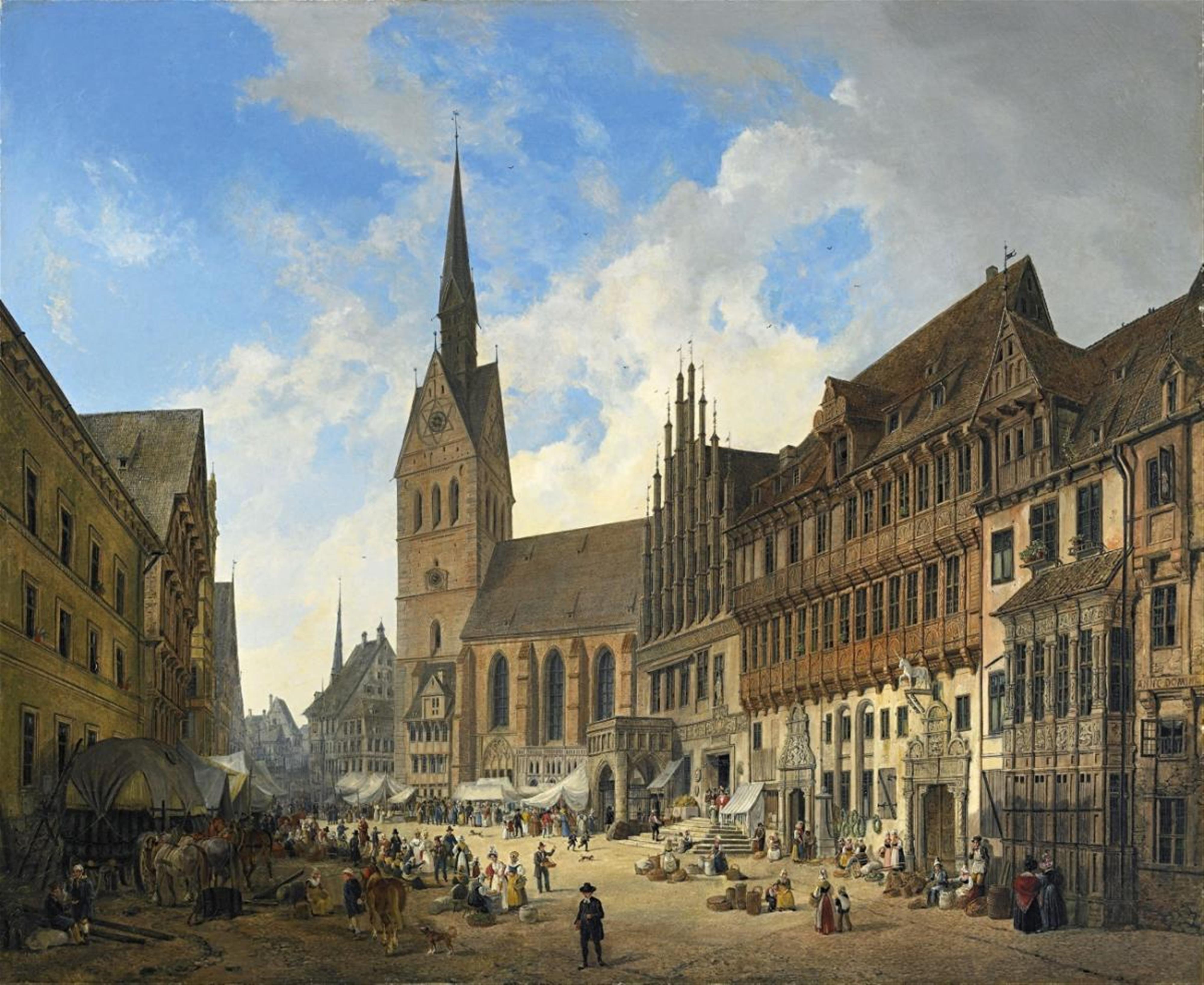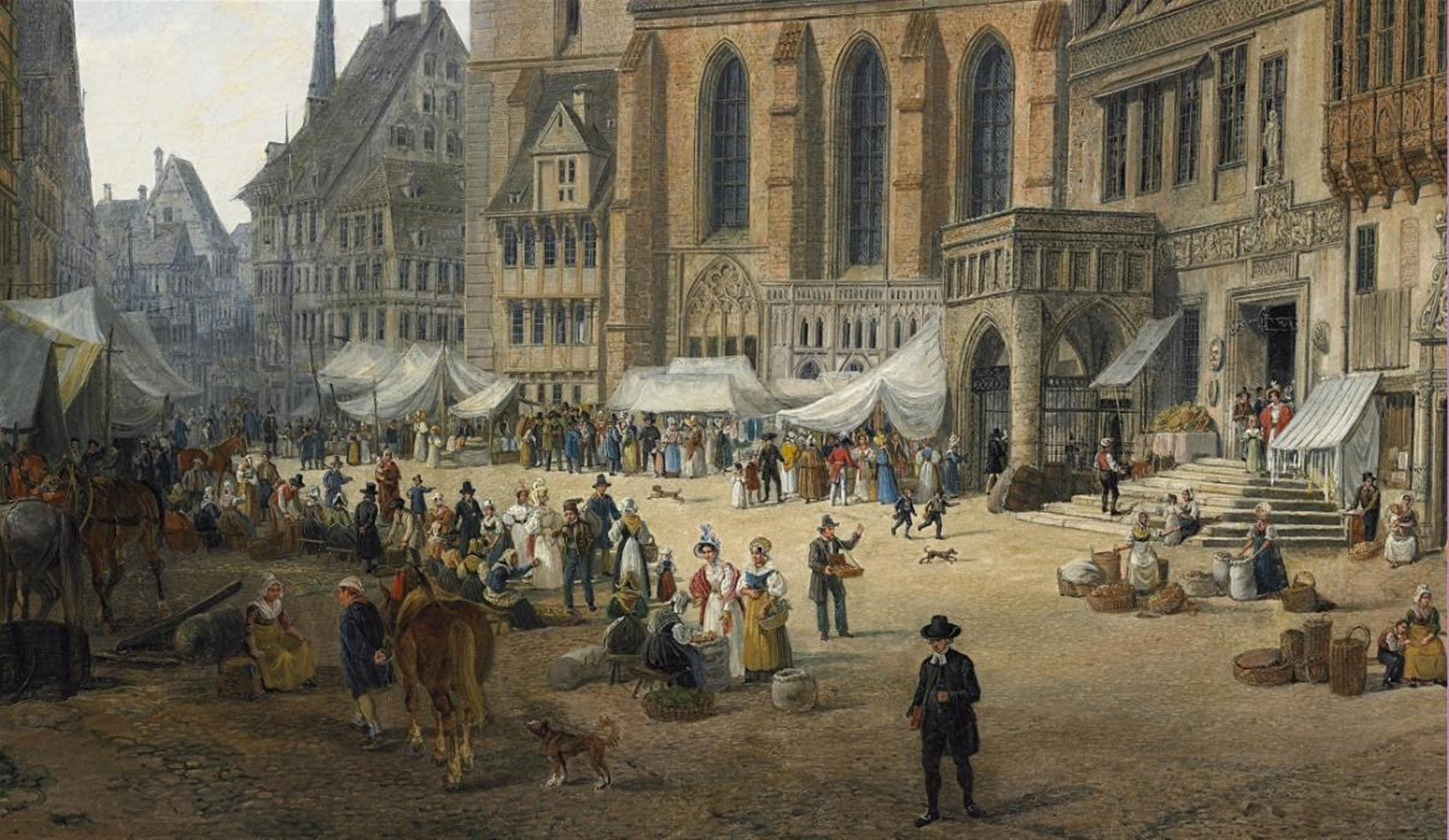Domenico Quaglio the Younger
The Market Church of St. Georgii et Jacobi, the Market Place and the Town Hall in Hannover
Oil on canvas (relined). 85 x 101 cm.
Domenico Quaglio fecit 1834.
The present work is not included in Brigitte Trost's 1973 catalogue raisonné, but as the author herself states in the preface “various pieces still evade detection”.
From Quaglio's biography, we know that his primary patrons were King Max Joseph, King Ludwig I and Crown Prince Maximilian of Bavaria. However, only a small number of the works he created for them survive today. Even those pieces which King Max Joseph ordered sent to the courts of Berlin, Dresden and Vienna, or those kept in the private collections of the Prussian Kings Frederick William III and IV are only sparsely represented today.
Domenico Quaglio was the main founder of the Munich school of architectural painting and the most important veduta painter of the Romantic era. Like Canaletto, he enlivened his town and city views with rich contrasts of light and shadow and elegant figures in historic costume. Quaglio's beautiful city views usually centre upon famous Gothic cathedrals, such as those of Strasbourg, Freiburg, Ulm, Regensburg, Cologne, Reims or Orvieto. Since the buildings are shown as they were in Quaglio's time, his works present a fascinating document of architectural history. His style masterfully combines the various contemporary traditions of the Munich school. For example, the influence of painters such as Dorner and Wagenbauer is evident in his landscapes, that of Pate and Cogels in the architecture and Wilhelm von Kobell in his figural staffage. His works are characterised by their enamel-like colouring, skilled use of light and clever perspectives designed to capture as much of the real architecture of his vedutas as possible. The everyday scenes which Quaglio captures so fancifully serve to lighten the mood of his works. Comparing the present work to other vedutas by the artist, this one stands out for its large size especially.




